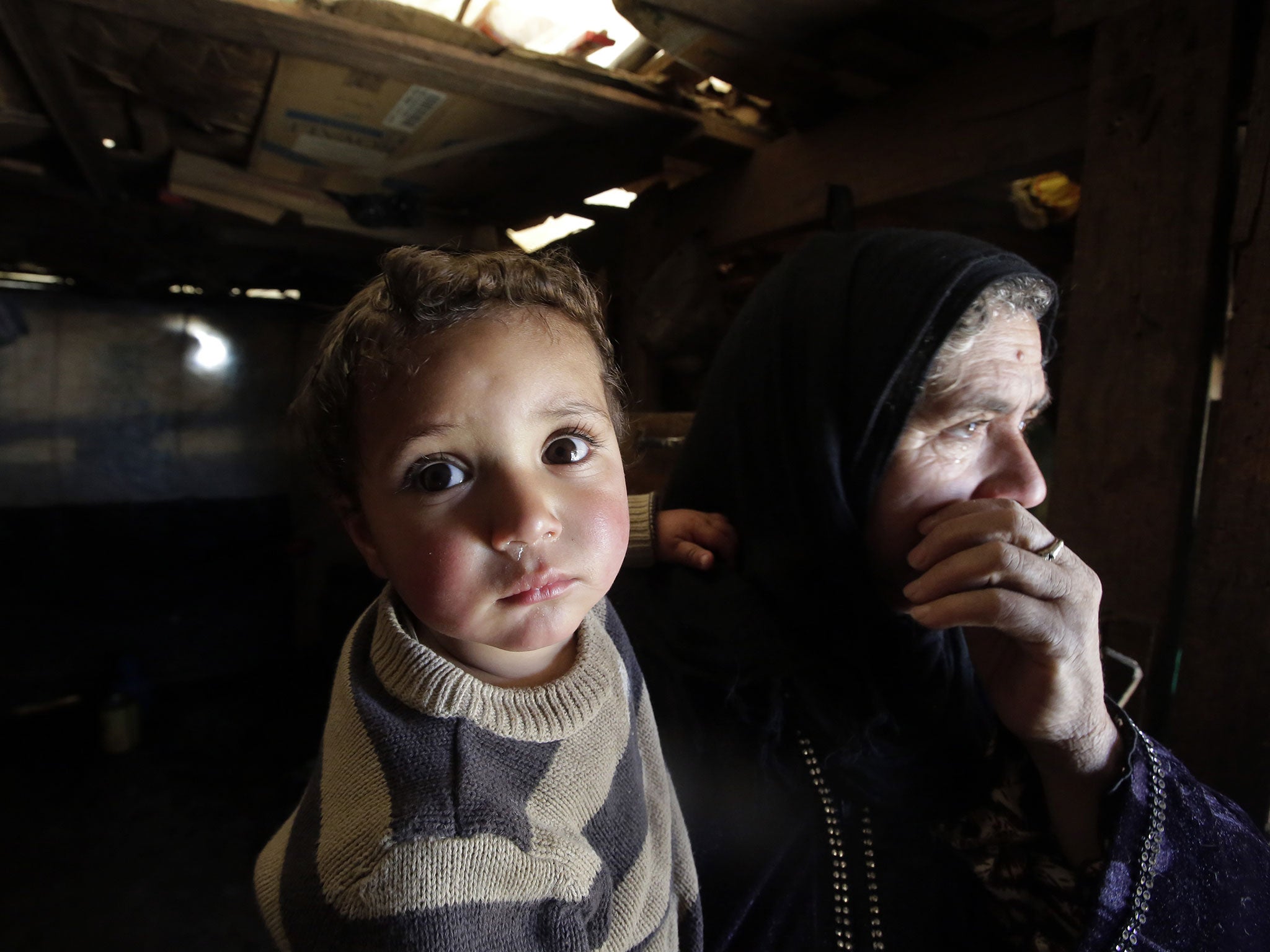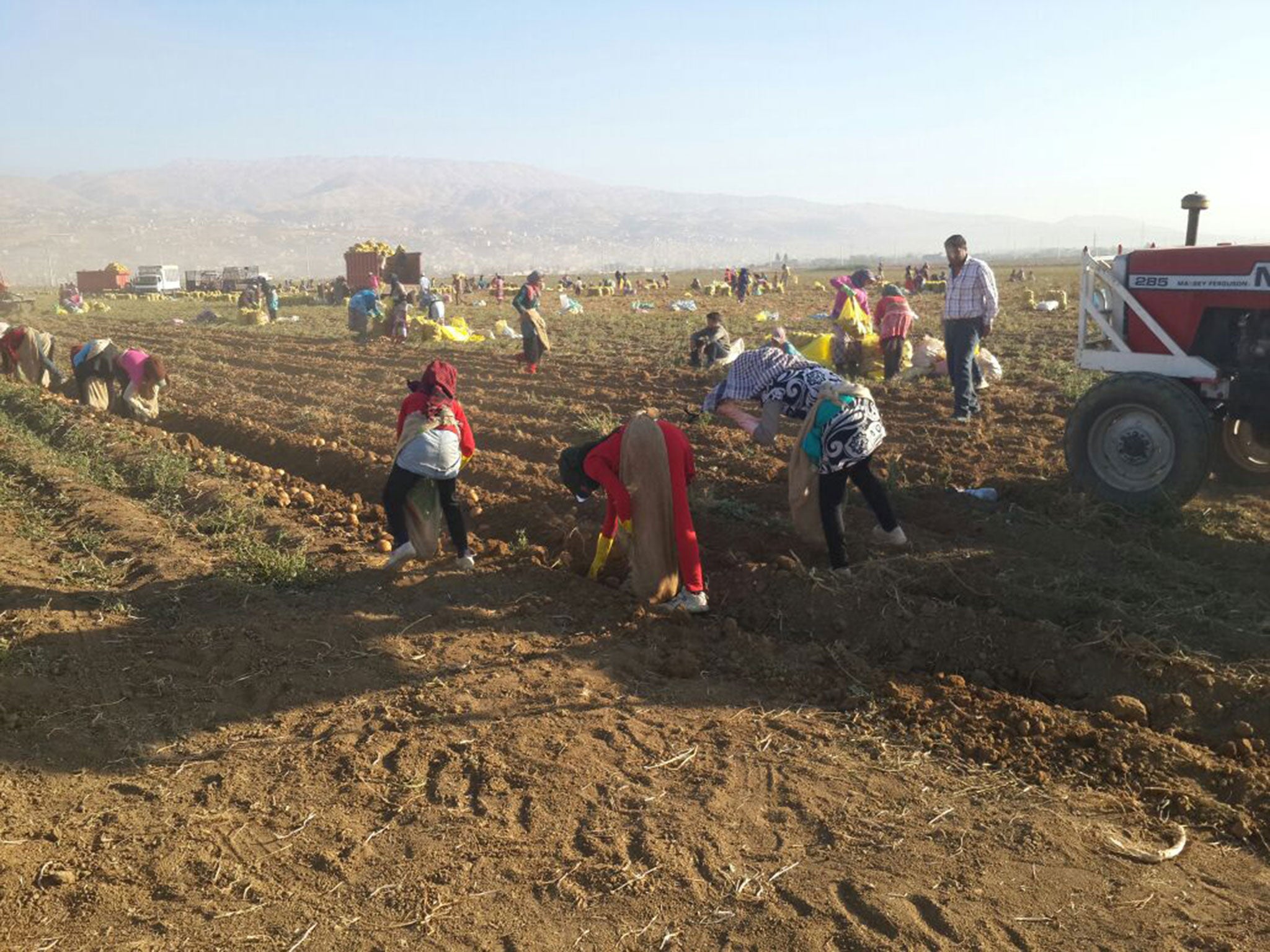Robert Fisk: The 200,000 Syrian child refugees forced into slave labour in Lebanon
While the world obsesses over the atrocities committed by Isis, the plight of those forced to flee the country has been largely forgotten. Robert Fisk takes a heartbreaking tour of the Sedyanel 7 camp


Your support helps us to tell the story
From reproductive rights to climate change to Big Tech, The Independent is on the ground when the story is developing. Whether it's investigating the financials of Elon Musk's pro-Trump PAC or producing our latest documentary, 'The A Word', which shines a light on the American women fighting for reproductive rights, we know how important it is to parse out the facts from the messaging.
At such a critical moment in US history, we need reporters on the ground. Your donation allows us to keep sending journalists to speak to both sides of the story.
The Independent is trusted by Americans across the entire political spectrum. And unlike many other quality news outlets, we choose not to lock Americans out of our reporting and analysis with paywalls. We believe quality journalism should be available to everyone, paid for by those who can afford it.
Your support makes all the difference.Eleven-year-old Abdullah was working on a construction site last week when he accidentally swallowed a rusty nail. He was one of up to 200,000 Syrian refugee children – some as young as five – working in Lebanon’s potato and bean fields or picking figs in the Bekaa Valley. Many of them are beaten with sticks in a situation perilously close to slave labour. And when their country’s cancerous war ends, they will be the new men and women who will have to return to rebuild their nation.
But they will be half-educated, having lived through their childhood as labourers, sleeping in some of the filthiest camps in the land.
Abdullah was living with his family in a tent in Tel Ferhoun when he swallowed the nail. He didn’t tell his parents, as he was afraid they would be angry with him. A fatal mistake. Just before the weekend, he died of tetanus poisoning. Newspapers carried not a word of his passing – after all, Isis supporters are in battle with Lebanese soldiers in the north and the army now claims it is fighting a war against “terrorists”. This means that the Lebanese army and the Syrian army and the Egyptian army and bits of the Libyan army and the Algerian army and the Tunisian police are now all claiming they are fighting “terror” – and of course they’re all deploying the very same words George W Bush and his British partner-in-crime used before they started smashing up the Middle East 11 years ago. So much, then, for little Abdullah.
Walking around these tented encampments in the Bekaa with Lebanese and Syrian NGOs of outstanding courage and humanity, one can only wonder how such a tragedy can be resolved. Because most of their fathers are in Syria, their mothers burdened by more and more childbirths – one Lebanese doctor has reported delivering a third child to the same Syrian woman refugee since she arrived here – the families need the money. Each camp runs a vicious system of “shawish”, a network of venal Syrian supervisors who pay some children only 90p per day. Families have to rent one tent lamp for £6 a month, a portable television for another £6. Some even have to pay £60 a month to live there.
One of the shawish, Radwan Abu Khaled, told me he could not afford to pay the children much because he needed the money to hire the tractor that trucks them to the fields each day. In many cases the Syrian shawish rents the land from Lebanese property owners – and has done so as a seasonal worker long before the Syrian war. It is an utterly corrupt system, since it stunts the growth of Syria’s next generation and will leave them desperately under-educated when – if – they go home. Alas, it is a worldwide statistic that, of displaced refugees, around 30 per cent never return home. Just don’t tell that to the Lebanese.
However, hope there is, of a kind, in the shape of a wonderful Lebanese NGO called Beyond, which works with Unicef and the International Labour Organisation (ILO). The boss is Maria Assi from Nabatiyeh (in the south of Lebanon), who must be the most loved woman in the country. Skinny children race to play with her whenever she enters a camp; women almost cry when they smile at her.

She has organised schools in camp after camp and campaigns furiously against child labour, arguing gently with the all-powerful “shawish” exploiters to at least reduce the hours they work so that the children can spend some of the day in school.
When I visited these camps, every child to whom I spoke – from five to 15 – did not want to labour in the fields. They came from all over Syria – one even came from the embattled town of Kobani – and many have wretched stories of blood and fire. One wild-haired little girl who flung herself into Maria Assi’s arms lost her mother in childbirth a month ago. The baby also died.
Maria said: “Beyond schools persuade the children to act out their lives – and their paintings have changed subtly: from crayoned corpses with blood spilling from their heads to trees and fruit and children dancing.
Her people even put on a theatrical play about child labour in which the real child workers played themselves in the fields. The “shawish” were themselves invited and 3,000 adult refugees turned up to watch.
“We kept asking Syrians what they needed,” Maria Assi says. “Education was their first priority. The schools – in tents, anywhere – was what they wanted. You can see cities destroyed, but you can’t have a generation destroyed.” Unicef pays for the education, but as yet there is no treatment for traumatised children, no mental health doctors or psychiatrist. Some of the tented encampments are well run – near Zahle, for example, the tents are clean, the ground swept.
But in a ditch beside Fayda 1 camp further north, the carcasses of animals lay rotting a few metres from the tents and children were allowed to play only on a giant pile of red earth near the sewer.
One Unicef official in Beirut spoke movingly to me of how Syrian families had simply spent all their savings.
“When they arrived, they took rented rooms. Then as the money began to get lower, they packed into one room, then they shared the one room with other families – and then went to live in tents. Some had been displaced three times in their own country before coming here.” Of course, there are now 1.2 million registered Syrian refugees in Lebanon – one in every three people in Lebanon is now a Syrian – and at least 15,000 refugee children have been born here. So difficult is the registration that by the end of this year, there could be 30,000 unregistered Syrian child refugees in Lebanon.
When I discussed all this in Beirut with Frank Hagemann, the cheerful German deputy regional director of the ILO, he said that the children need “on the job training and protection in addition to schools”, because the reconstruction of Syria will need skills. “We try to put more schools in place to reduce the size of this lost generation. Some children are working 12 to 14 hours a day. Working hours must come down. Let’s at least save the children’s health.” In other words, if child labour cannot be stopped, then the working hours should be reduced and include vocational training.
At present, according to an NGO report last month, Syrian school enrolment in Lebanon is below that of sub-Saharan Africa. And 80 per cent of Syrian refugees here – this is a Unicef statistic – live in areas inhabited by 68 per cent of the poorest Lebanese.
Meanwhile, the camps are on the move.
When fighting started at Qalamoun in the north, between Syrian troops and Hizballah and Nusra Front rebels, the tents moved south. When fighting started in Qusair, the tents moved again, thousands of them, almost overnight. But the refugees have achieved one grim precedent in Lebanon. When Syrian refugees began dying – of ill health or old age – the municipalities refused to bury them in Lebanon’s strictly divided cemeteries. But one kind Lebanese donated land near the Syrian border for a mixed Syrian graveyard.
Al-Faour cemetery is thus the only plot in the whole of Lebanon where Muslim and Christian can lie together for eternity.